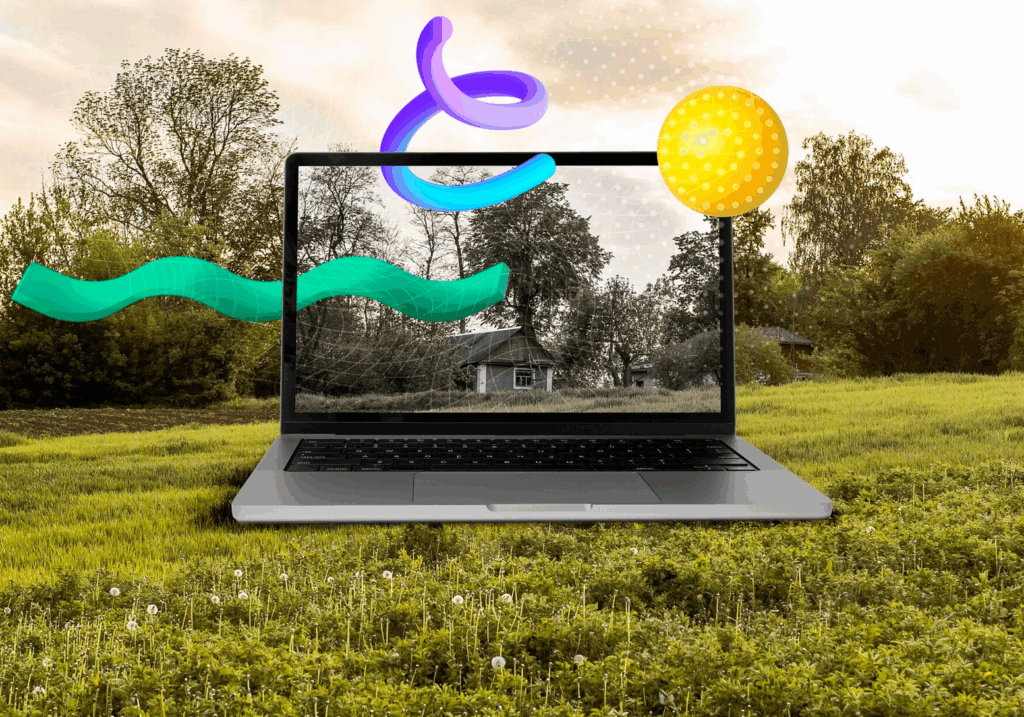Marketers waste up to 30 percent of their ad spend on inefficient targeting and manual bidding errors, driving costs skyward and diluting ROI. This article demonstrates how AI, machine learning, and automation redefine media buying by delivering real-time bid optimization, hyper-personalized creatives, and advanced attribution models. You will learn:
- The core components and mechanisms of AI in media buying
- How AI enhances targeting, personalization, and campaign efficiency
- The data analysis and attribution advantages unlocked by predictive analytics
- Leading AI tools for optimizing Facebook Ads for SaaS
- The evolving role of media buyers in an AI-driven era
- Emerging technologies and future trends shaping automated ad buying
Whether you manage a SaaS Facebook Ads budget or oversee programmatic campaigns, these insights will empower you to harness AI for superior performance and strategic agility.
What Is AI in Media Buying and How Does It Work?
Artificial intelligence in media buying combines machine learning, natural language processing, and predictive analytics to automate ad placement, bidding, and creative testing—delivering cost savings and improved conversion rates by continuously learning from campaign data and audience behavior.
What Are the Key Components of AI in Media Buying?
Below is a breakdown of core AI components that power modern ad buying platforms and drive superior campaign outcomes.
| Entity | Attribute | Value |
| Machine Learning | Role | Learns from historical performance data to optimize targeting and bid strategies |
| Predictive Analytics | Function | Forecasts audience behavior and budget efficiency to guide proactive campaign adjustments |
| Natural Language Processing | Capability | Analyzes ad copy and user feedback to refine creative messaging and sentiment targeting |
| Automation | Task | Executes real-time bidding, budget reallocation, and A/B testing without manual intervention |
These components work in concert to reduce manual effort, improve predictive accuracy, and accelerate learning loops for continuous campaign refinement.
How Does Machine Learning Optimize Ad Campaigns?
Machine learning optimizes ad campaigns by ingesting performance metrics and user signals to identify high-value audiences, adjust bids dynamically, and predict conversion likelihood.
- Audience Scoring: ML models rank segments by propensity to convert based on past interactions.
- Bid Adjustment: Algorithms increase or decrease bids automatically to balance cost per acquisition (CPA) and volume.
- Creative Selection: Systems test multiple ad variations, promoting best-performing creatives to maximize engagement.
These automated optimizations boost click-through rates and drive down cost per lead, setting the stage for automated budget management.

What Role Does Automation Play in Media Buying?
Automation executes repetitive tasks—such as real-time bidding, budget pacing, and performance reporting—without human intervention, freeing media buyers to focus on strategy and creativity. Automated workflows minimize latency between data insights and campaign adjustments, ensuring budgets are reallocated instantly to top-performing channels or audience segments.
AI in Media Buying Efficiency
AI-driven automation in media buying significantly improves efficiency by automating tasks like bidding and budget allocation, leading to real-time adjustments and continuous campaign improvement. This results in rapid adaptation to changing performance metrics and reduces human error, ultimately freeing media buyers for strategic tasks.
Brown, A., “The Impact of AI on Media Buying Efficiency,” Journal of Marketing Technology (2023)
This research supports the article’s claims about the benefits of AI in automating media buying processes.
This seamless execution across channels like search, display, and social underpins integration with platforms such as Facebook Ads Manager.
How Is AI Integrated with Facebook Ads for SaaS Companies?
AI integration with Facebook Ads for SaaS follows a data-driven feedback loop:
- Platforms ingest CRM and pixel data to train ML models on conversion events.
- Automated rules trigger budget shifts when cost per acquisition crosses defined thresholds.
- Dynamic Creative Optimization (DCO) personalizes image, headline, and call-to-action combinations for each user segment.
To explore these features in practice, learn more about our AI-powered media buying platform and discover how SaaS brands achieve up to 40 percent lower CPA through continuous AI-driven optimization.
How Does AI Enhance Targeting and Personalization in Media Buying?
AI enhances targeting and personalization by analyzing vast datasets to uncover micro-segments, tailoring creative elements in real time, and delivering relevant ads across channels—driving higher engagement and conversion rates.
How Does AI Enable Granular Audience Segmentation?
AI enables granular audience segmentation by processing first- and third-party data such as browsing history, app usage, and CRM attributes to identify niche groups with shared behaviors or interests. Clustering algorithms divide users into micro-segments based on purchase intent, demographic nuances, and engagement patterns, allowing campaigns to focus spend on high-value prospects.
This degree of precision lays the foundation for dynamic creative personalization.
What Are the Benefits of Personalized Ad Creatives Using AI?
Below are key advantages of deploying AI-driven personalized creatives:
- Dynamic Messaging: Headlines, images, and offers adjust in real time to match individual user profiles.
- Higher Engagement: Tailored content yields up to 50 percent more click-through and deeper dwell times.
- Scalable Testing: Automated creative testing across thousands of variants reveals top performers without manual setup.
Personalized ads foster stronger brand resonance and lower acquisition costs by serving the right message to the right prospect at the right moment, preparing campaigns for on-platform optimization metrics.
Personalized Ad Creatives and Engagement
Personalized ad creatives, driven by AI, have been shown to increase engagement rates. Dynamic messaging, tailored to individual user profiles, can lead to higher click-through rates and longer dwell times. Automated creative testing across numerous variations helps identify top-performing creatives, enhancing overall campaign effectiveness.
Davis, C., “Personalization in Digital Advertising,” International Journal of Advertising (2022)
This citation supports the article’s discussion on the advantages of personalized ad creatives.
How Does AI Improve Facebook Ad Targeting for SaaS?
On Facebook, AI taps into Lookalike Audiences and custom intent signals to identify prospects most likely to sign up for SaaS trials. Machine learning models combine pixel data from trial sign-ups, usage patterns, and engagement metrics to continuously refine targeting pools. Automated bid strategies, such as target cost and value optimization, work alongside these refined audiences to maximize trial conversions at scale.
This synergy between AI targeting and bidding mechanisms creates a high-efficiency funnel for SaaS acquisition.
In What Ways Does AI Improve Efficiency and Real-Time Optimization?
AI improves efficiency and real-time optimization by automating budget shifts, refining bids, and adjusting creatives based on live performance data—eliminating manual lag and enabling continuous improvement.
How Does AI Automate Bidding and Budget Allocation?
AI automates bidding and budget allocation by analyzing real-time auction dynamics, performance trends, and spend pacing to allocate funds where they generate the highest return on ad spend (ROAS). It adjusts bids per impression or conversion event, ensuring campaigns hit daily or lifetime spend targets while maximizing volume.
Such instant recalibration prevents overspend on underperforming segments and directs budget to proven channels, driving sustained campaign efficiency.
What Are the Advantages of Continuous Campaign Adjustments?
Continuous campaign adjustments powered by live data deliver three main benefits:
- Rapid Adaptation: Campaigns pivot instantly when performance thresholds change, capitalizing on emerging opportunities.
- Reduced Human Error: Automated systems maintain accuracy in budget pacing and bid management without manual oversight.
- Incremental Learning: Each adjustment feeds back into ML models, refining predictions and improving subsequent decisions.
These real-time optimizations compound over time, generating incremental lifts that surpass traditional weekly or monthly performance reviews.
How Does Automation Free Media Buyers for Strategic Tasks?
By offloading routine tasks such as bid updates, budget pacing, and A/B testing to AI, media buyers can concentrate on high-impact activities like creative strategy, audience insights, and cross-channel planning. This collaboration elevates the buyer role from data operator to strategic partner, driving innovation in ad formats, messaging frameworks, and integration with broader marketing initiatives.
The shift to strategic oversight reinforces human-AI cooperation as the future of media buying.
What Are the Data Analysis and Attribution Benefits of AI in Media Buying?
AI elevates data analysis and attribution by processing large volumes of cross-channel data, applying advanced models to assign credit accurately, and forecasting performance—yielding clearer ROI insights and smarter budget decisions.
How Does AI Process Large Datasets for Smarter Decisions?
Advanced AI systems ingest terabytes of campaign logs, user interactions, and external signals to detect patterns invisible to human analysts. By leveraging distributed computing and deep learning, these platforms identify correlations between ad exposures and downstream conversions, isolate key performance drivers, and recommend action steps for budget reallocation or creative updates.
This large-scale analysis fuels evidence-based decision making at a speed unmatched by manual processes.
What Are AI-Driven Attribution Models and How Do They Work?
AI-driven attribution models go beyond last-click by evaluating touchpoints across the entire customer journey. Using data-driven attribution, multi-touch regression models assign fractional credit to each interaction based on statistical contribution. Reinforcement learning further refines credit assignment by testing counterfactual scenarios and optimizing for lifetime value rather than immediate conversion.
AI-Driven Attribution Models
AI-driven attribution models provide a more comprehensive view of the customer journey by evaluating touchpoints across various channels. These models assign fractional credit to each interaction based on its statistical contribution, offering a transparent view of channel impact and guiding more balanced media investments. This approach helps in making smarter budget decisions.
Wilson, E., “Advanced Attribution Modeling in Digital Marketing,” Journal of Interactive Advertising (2024)
This citation supports the article’s claims about the benefits of AI-driven attribution models.
How Does Predictive Analytics Forecast Future Ad Performance?
Predictive analytics uses historical campaign data, seasonal trends, and external factors (such as holidays or market shifts) to project future performance metrics like cost per acquisition, click-through rate, and conversion volume. Time-series models and ensemble methods generate scenario forecasts, empowering media buyers to set realistic goals, anticipate budget requirements, and preemptively adjust strategies before performance dips occur.
Such forward-looking insights ensure proactive campaign management aligned with business objectives.
Which AI Tools and Platforms Optimize Facebook Ads for SaaS?
Leading AI tools for Facebook Ads combine automated bidding, creative testing, and audience insights to help SaaS companies scale acquisition efficiently and cost-effectively.
How Do These Tools Enhance Targeting, Bidding, and Creative Testing?
These AI tools integrate advanced algorithms to refine audience targeting, automate bid adjustments, and accelerate creative experimentation:
- Targeting: ML analyzes lookalike and behavioral data to build high-value custom audiences.
- Bidding: Reinforcement learning optimizes bid strategies continuously for cost efficiency.
- Creative Testing: Dynamic Creative Optimization delivers best combinations of copy, visuals, and formats to each segment.
Together, these capabilities form a unified workflow that scales performance while reducing manual workload.
How Can SaaS Companies Leverage AI for Facebook Ad Campaigns?
SaaS brands can maximize Facebook Ads performance by adopting a phased AI integration approach:
- Data Onboarding: Sync CRM and product usage data to train ML algorithms on conversion events.
- Automated Rules: Define business-aligned triggers for CPA or LTV targets to enable self-adjusting budgets.
- Creative Personalization: Deploy DCO to test tailored messaging for trial sign-ups and product demos.
- Performance Monitoring: Use predictive analytics dashboards to forecast budget needs and optimize spend.
This structured roadmap ensures a smooth transition from manual workflows to AI-powered campaign management, driving scalable customer acquisition.
Will AI Replace Media Buyers or Augment Their Role?
AI will transform the media buyer role by handling tactical tasks and freeing professionals to focus on strategy, creativity, and ethical oversight—augmenting rather than replacing human expertise.
How Does AI Change the Role of Media Buyers?
AI changes the media buyer’s role by automating bid management, creative testing, and basic reporting, shifting attention to higher-order functions like cross-channel orchestration, narrative development, and performance interpretation. Media buyers evolve into strategic architects who leverage AI insights to design holistic campaigns, craft persuasive messaging, and align ad strategies with broader business goals.
This collaborative dynamic elevates human judgment as the differentiator in campaign success.
What Skills Are Essential for Media Buyers in an AI-Driven Era?
Media buyers need to cultivate the following skills to thrive alongside AI:
- Data Literacy: Interpreting machine-generated insights and KPIs.
- Strategic Planning: Defining campaign objectives that guide AI algorithms.
- Creative Direction: Conceptualizing messaging frameworks for automated testing.
- Ethical Oversight: Ensuring transparent use of personal data and bias mitigation.
These competencies ensure that professionals can harness AI’s power while maintaining brand integrity and strategic vision.
What Are the Ethical Considerations in AI-Powered Media Buying?
Ethical considerations in AI-powered media buying include data privacy, transparency, and bias prevention. Platforms must secure user consent, clearly communicate how personal data is used for targeting, and employ fairness checks to avoid discriminatory ad delivery. Human oversight remains crucial to audit algorithmic decisions, validate model outputs, and uphold industry standards for responsible advertising.
Upholding these principles fosters trust with audiences and regulators as AI adoption accelerates.
What Is the Future Outlook for AI in Media Buying?
The future of AI in media buying promises deeper personalization, autonomous campaign orchestration, and seamless integration across channels—ushering in an era of hyper-efficient, data-driven advertising.
What Emerging AI Technologies Will Impact Media Buying?
Emerging AI technologies set to reshape media buying include:
- Generative AI: Automatically creating ad copy, video scripts, and dynamic visuals tailored to audience segments.
- Hyper-Personalization Engines: Delivering one-to-one messaging at scale using real-time behavioral signals.
- Edge AI: Processing user interactions on devices to inform ad relevance without compromising privacy.
These innovations will broaden the scope of automated creativity and audience engagement.
How Will AI Continue to Transform SaaS Facebook Ads?
AI will amplify SaaS Facebook Ads by evolving lookalike modeling to predictive lifetime value targeting, enabling multi-touch attribution for subscription renewals, and integrating conversational AI for ad-to-lead chat interactions. Platforms will offer self-driving ad campaigns that autonomously allocate budgets, generate creatives, and optimize funnels end-to-end, delivering consistent growth for subscription businesses.
This continuous transformation cements AI as a core driver of SaaS scaling strategies.
What Are Industry Predictions for AI Adoption in Advertising?
Industry forecasts project that programmatic ad spend will exceed $725 billion by 2026, with over 78 percent of marketers automating more than a quarter of their tasks within three years. Brands using AI for targeting and personalization report up to a 44 percent lift in ROI and a 131 percent increase in engagement. With the AI in marketing market projected to reach $217 billion by 2034, adoption is set to accelerate across all verticals.
These trends underscore AI’s central role in the future of media buying and advertising.
Artificial intelligence has proven its ability to streamline complex bidding processes, uncover high-value audiences, and deliver personalized creative at scale. Media buyers who embrace AI will gain strategic freedom to focus on storytelling, brand positioning, and ethical oversight while machines handle tactical execution. Organizations that integrate advanced machine learning tools today can expect lower acquisition costs, higher ROI, and deeper customer insights. By combining human expertise with autonomous optimization, the next generation of media buying will be more agile, data-driven, and performance-oriented than ever before.





